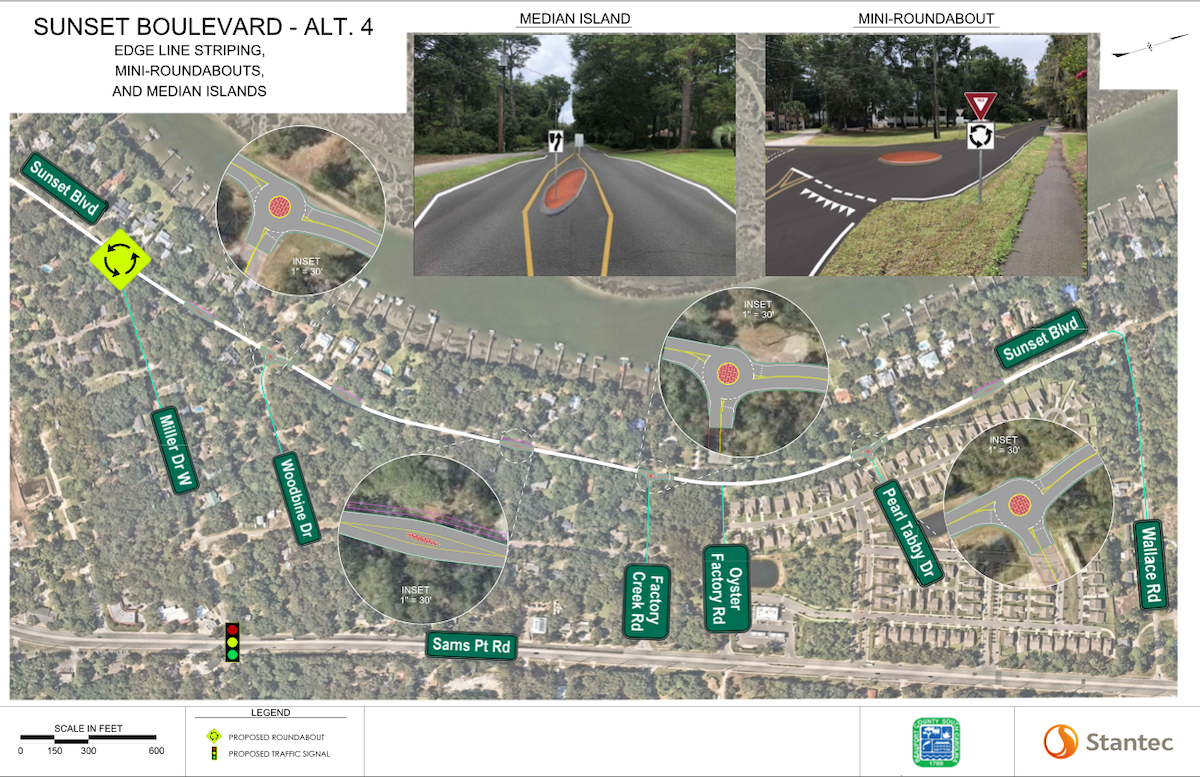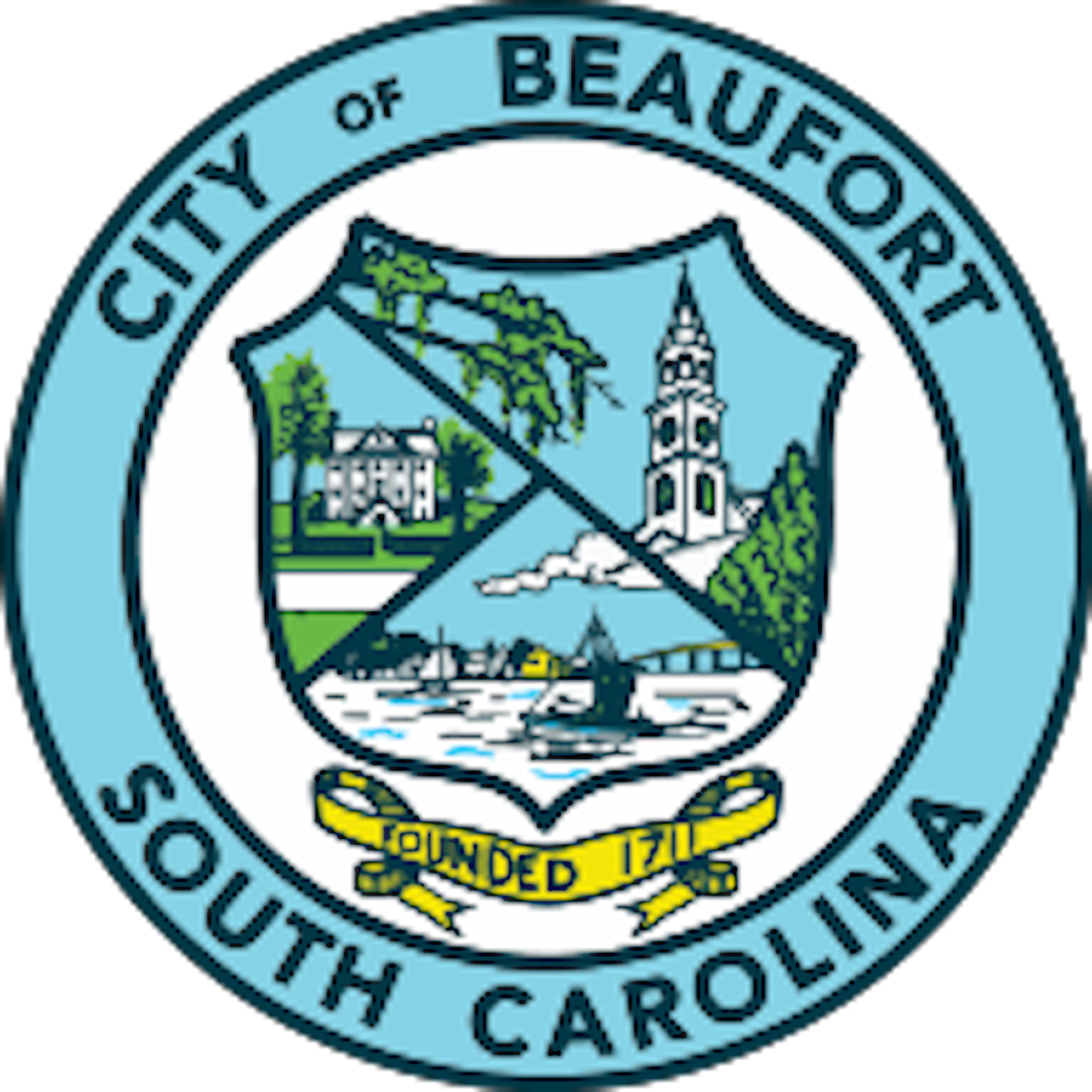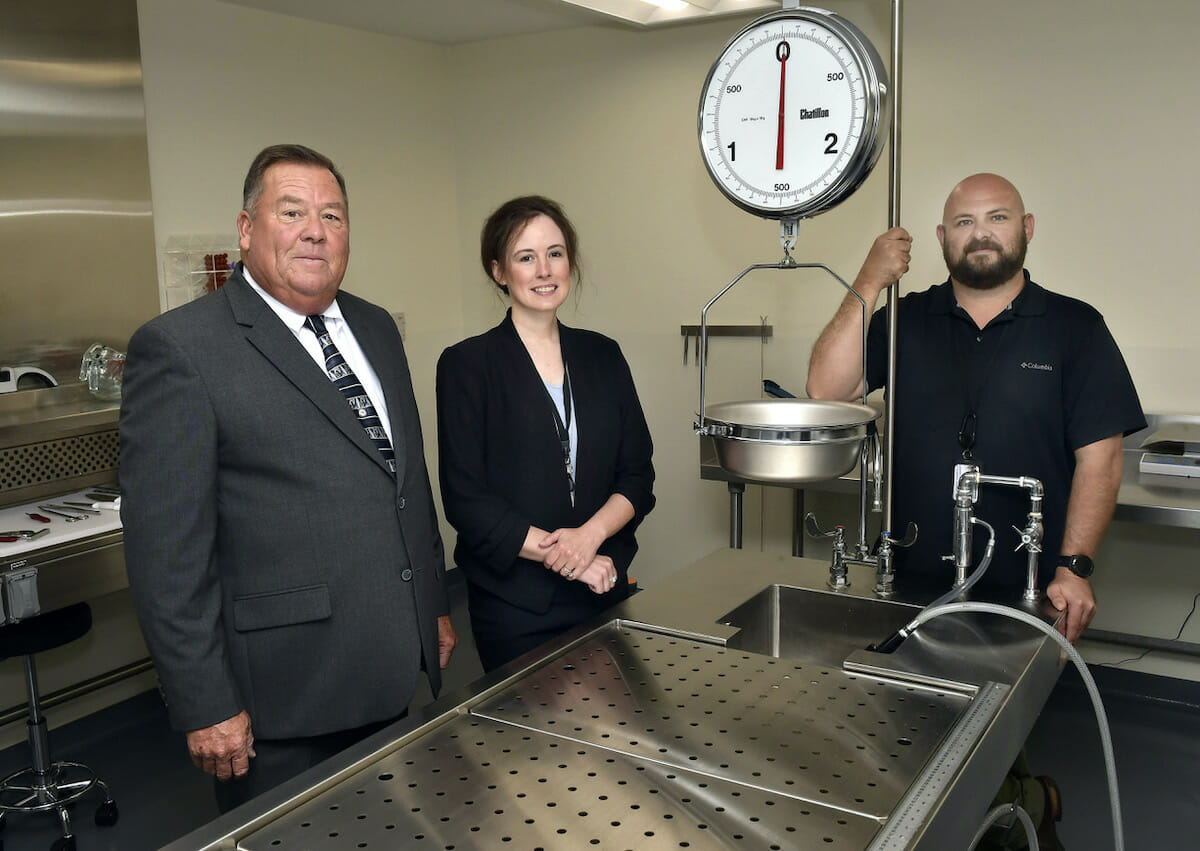By Tony Kukulch
With input from the public, county officials have a tentative plan to slow traffic along Sunset Boulevard on Lady’s Island, but a source for funding the entire plan has yet to be identified.
According to Beaufort County District 2 Councilmember Paul Sommerville, speeding along narrow Sunset Boulevard has long been a problem for residents who live on or near the roadway.
“This has been a thorny issue for at least a decade,” Sommerville said. “People use (Sunset Boulevard) as a cut through to get to Sam’s Point without going through an intersection. A lot of them speed. I own a house on Wallace Road. I’ve seen plenty of it. I’m talking about people driving absolutely crazy on that road. There have been a couple of deaths and I don’t know how many accidents.”
Traffic calming is the use of physical road design and/or other measures like speed bumps, stop signs or traffic circles to slow vehicles as they move through urban, commercial or residential neighborhoods.
During a public meeting held Wednesday, Sept. 7, county staff displayed four different plans using various combinations of available traffic calming measures. Attendees had the opportunity to review the plans, discuss the options with county officials and select a preferred option.
The plan referred to as Alternative 4 was the overwhelming choice among those who attended the session, Assistant County Administrator Jared Fralix said. Alternative 4 incorporates all of the traffic calming measures available along the length of Sunset including edge striping, new roundabouts and median islands.
“We’re going to move forward now to design with the options that were selected in Alternative 4,” Fralix said.
Because Sunset Boulevard falls under the jurisdiction of the South Carolina Department of Transportation (DOT) the county is obligated to adhere to DOT guidelines for managing the roadway. Those guidelines prevent the county from taking it upon themselves to do things like lowering the speed limit or installing stop signs.
Fralix explained that more traffic calming measures become available as a roadway’s speed limit is reduced. For example, if a given road’s speed limit is 45 mph, speed bumps cannot be used. If the speed limit is 25 mph, they’re allowed.
The county has had some success reducing the speed limit on Sunset.
“The speed limit when I started was 45,” Sommerville noted. “You know if it’s 45, you can only imagine how fast they actually drove. It took several years, but I finally got the DOT to lower it from 45 to 35. It was something, but it didn’t solve the problem.”
More recently, Rep. Shannon Erickson, R-124, helped convince DOT to reduce it again, this time to 30 mph. With the speed limit now set and unlikely to be further reduced, the traffic calming measures available were clear, and county engineers set about developing the four alternative plans.
The 2018 Penny Referendum collected a total of $120 million for traffic projects across the county. Traffic improvements projects along the U.S. 278 corridor to Hilton Head Island received $80 million. Sidewalk and pathway improvements received $10 million. Nine projects were nested under the Lady’s Island Corridor Traffic Improvement initiative, which was allocated $30 million.
Improving Sunset Boulevard from Sea Island Parkway to Miller Drive West was one of those nine projects, and nearly $4.5 million was earmarked for the initiative. However, that stretch of road only accounts for about one-quarter of the one-mile long road. The remainder of the project has no funding at the time.
Fralix said that, had the transportation tax discussed earlier this year by the county council not been abandoned, it would have covered the remaining cost of the Sunset Boulevard project. Instead, the county plans to use the money from the general fund to pay for the design phase of the project. A transportation tax will again be discussed in 2024. If it passes, revenue from that tax could be used to fund construction.
“If we have the opportunity to go back in 2024, we don’t have to start at ground zero,” explained Fralix. “We’ll have the project ready to go. All we’ll have to do is collect the funding to go straight to construction. That’s our plan right now, to move forward with design unless some other source of funding becomes available between then and now.”
The public will next have an opportunity to comment on the project when the county has completed between 30 and 60% of the design. That is expected to occur sometime next year, but more precise timing is not yet available.
“It’s an intractable problem,” said Sommerville. “I don’t know that the current solutions we have are going to satisfy everybody – probably not. You do what you can. But I’m happy to see that our engineers are going to try something. I’m hoping against hope that these things will actually slow traffic down. But as a traffic engineer once told me, you can’t engineer around crazy. Most of the things that I’ve seen on that road are absolutely crazy.”
Tony Kukulich is a recent transplant to the Lowcountry. A native of Wilmington, Del., he comes to The Island News from the San Francisco Bay Area where he spent seven years as a reporter and photographer for several publications. He can be reached at tony.theislandnews@gmail.com.












